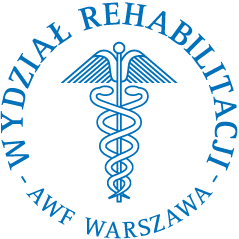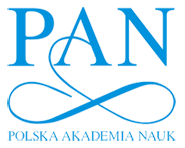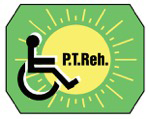


|
Current issue
Archive
Manuscripts accepted
About the journal
Editorial board
Reviewers
Abstracting and indexing
Contact
Instructions for authors
Publication charge
Ethical standards and procedures
Editorial System
Submit your Manuscript
|
3/2022
vol. 36 Original article
Exercise therapy plus manual therapy improves acromiohumeral distance measured by real-time ultrasound in overhead athletes with shoulder impingement syndrome
Saurabh Sharma
1
,
Shalini Sharma
1, 2
,
Rakesh Kumar Sharma
3
,
Abhinav Jain
4
1.
Jamia Millia Islamia (A Central University), India
2.
Aged Care Home, Melbourne, Victoria, Australia
3.
Santosh University, Ghaziabad, Uttar Pradesh, India
4.
Jamia Hamdard University, India
Advances in Rehabilitation, 2022, 36(3), 1–10
Online publish date: 2022/08/19
Article file
- 2022-03-ar-01.pdf
[7.10 MB]
ENW EndNote
BIB JabRef, Mendeley
RIS Papers, Reference Manager, RefWorks, Zotero
AMA
APA
Chicago
Harvard
MLA
Vancouver
1. Garving C, Jakob S, Bauer I, Nadjar R, Brunner UH. Impingement syndrome of the shoulder. Dtsch Arztebl Int. 2017; 114(45): 765-76. 2.
Xu M, Li Z, Zhou Y, Ji B, Tian S, Chen G. Correlation between acromiohumeral distance and the severity of supraspinatus tendon tear by ultrasound imaging in a Chinese population. BMC Musculoskelet Disord. 2020; 21(1): 106. 3.
Bolia I K, Collon K, Bogdanov J, Lan R, Petrigliano FA. Management options for shoulder impingement syndrome in athletes: insights and future directions. Open Access J Sports Med. 2021; 12: 43-53. 4.
Saupe, N, Pfirrmann CW, Schmid MR, Jost B, Werner CM, Zanetti M. Association between rotator cuff abnormalities and reduced acromiohumeral distance. AJR Am J Roentgenol. 2006; 187(2): 376-82. 5.
Scheyerer MJ, Brunner FE, Gerber C. The acromiohumeral distance and the subacromial clearance are correlated to the glenoid version. Orthop Traumatol-Sur. 2016; 102(3): 305-9. 6.
Sharma S, Hussain M, Jain A, Moiz JA. Diagnostic accuracy and reliability of sonographic evaluation in overhead athletes with shoulder impingement syndrome. JCDR. 2018; 12(8): 17-21. 7.
Schmidt WA, Schmidt H, Schicke B, Gromnica-Ihle E. Standard reference values for musculoskeletal ultrasonography. Ann Rheum Dis. 2004; 63: 988-94. 8.
Land H, Gordon S, Watt K. Effect of manual physiotherapy in homogeneous individuals with subacromial shoulder impingement: A randomized controlled trial. Physiother Res Int. 2019; 24(2): e1768. 9.
Holmgren T, Hallgren HB, Öberg B, Adolfsson, L, Johansson K. Effect of specific exercise strategy on need for surgery in patients with subacromial impingement syndrome: randomised controlled study. BMJ. 2012; 344: e787. 10.
Desmeules F, Minville L, Riederer B, Côté CH, Frémont P. Acromio-humeral distance variation measured by ultrasonography and its association with the outcome of rehabilitation for shoulder impingement syndrome. Clin J Sport Med. 2004; 14(4): 197-205. 11.
Akkaya N, Akkaya S, Gungor HR, Yaşar G, Atalay NS, Sahin F. Effects of weighted and un-weighted pendulum exercises on ultrasonographic acromiohumeral distance in patients with subacromial impingement syndrome. J Back Musculoskelet Rehabil. 2017; 30(2): 221-8. 12.
Desmeules F, Boudreault, J, Dionne C, Frémont P, Lowry V, MacDermid JC, et al. Efficacy of exercise therapy in workers with rotator cuff tendinopathy: a systematic review. J Occup Health. 2016; 58(5): 389-403. 13.
Dong W, Goost H, Lin XB, Burger C, Paul C, Wang ZL, et al. Treatments for shoulder impingement syndrome: a PRISMA systematic review and network meta-analysis. Medicine (Baltimore). 2015; 94(10): e510. 14.
Boudreau N, Gaudreault N, Roy JS, Bédard S, Balg F. The addition of glenohumeral adductor coactivation to a rotator cuff exercise program for rotator cuff tendinopathy: a single-blind randomized controlled trial. J Orthop Sports Phys Ther. 2019; 49(3): 126-35. 15.
Charry FB, Martínez MJL, Rozo L, Jurgensen F, Guerrero-Henriquez, J. In vivo effects of two shoulder girdle motor control exercises on acromiohumeral and coracohumeral distances in healthy men. J Man Manip Ther. 2021; 29(6): 367-75. 16.
Savoie A, Mercier C, Desmeules F, Frémont P, Roy JS. Effects of a movement training-oriented rehabilitation program on symptoms, functional limitations and acromiohumeral distance in individuals with subacromial pain syndrome. Man Ther. 2015; 20(5): 703-8. 17.
Cools AM, Witvrouw EE, Declercq GA, Danneels LA, Cambier DC. Scapular muscle recruitment patterns: trapezius muscle latency with and without impingement symptoms. Am J Sports Med. 2003; 31(4): 542-9. 18.
De Mey K, Danneels L, Cagnie B, Cools AM. Scapular muscle rehabilitation exercises in overhead athletes with impingement symptoms: effect of a 6-week training program on muscle recruitment and functional outcome. Am J Sports Med. 2012; 40(8): 1906-15. 19.
Cotter EJ, Hannon CP, Christian D, Frank RM, Bach Jr BR. Comprehensive examination of the ath-lete’s shoulder. Sports Health. 2018; 10(4): 366-75. 20.
Tate AR, Mcclure PW, Young IA, Salvatori R, Michener LA. Comprehensive impairment-based exercise, and manual therapy intervention for patients with subacromial impingement syndrome: a case series. J Orthop Sports Phys Ther. 2010; 40(8): 474-93. 21.
Kuhn JE. Exercise in the treatment of rotator cuff impingement: a systematic review and a synthesized evidence-based rehabilitation protocol. J Shoulder Elbow Surg. 2009; 18(1): 138-60. 22.
Kachingwe AF, Phillips B, Sletten E, Plunkett SW. Comparison of manual therapy techniques with therapeutic exercise in the treatment of shoulder impingement: a randomized controlled pilot clinical trial. J Man Manip Ther. 2008; 16(4): 238-47. 23.
Zaky LA, Sabet Nazm, Mohamed MM, Mosad, AE. Effect of Exercise Program on Acromiohumeral Distance in Subacromial Impingement Syndrome. J Med Sci Clin Res. 2016; 4(5): 10568-74. 24.
Lakens D. Calculating and reporting effect sizes to facilitate cumulative science: a practical primer for t-tests and ANOVAs. Front Psychol. 2013; 4: 863. 25.
Mouelhi Y, Jouve E, Castelli C, Gentile S. How is the minimal clinically important difference established in health-related quality of life instruments? Review of anchors and methods. Health Qual Life Outcomes. 2020; 18: 136. 26.
Kim SY, Weon JH, Jung, DY, Oh JS. Effect of the scapula-setting exercise on acromio-humeral distance and scapula muscle activity in patients with subacromial impingement syndrome. Phys Ther Sport. 2019; 37: 99-104. 27.
Reinold MM, Escamilla R, Wilk KE. Current concepts in the scientific and clinical rationale behind exercises for glenohumeral and scapulothoracic musculature. J Orthop Sports Phys Ther. 2009; 39(2): 105-17. 28.
Ackland DC, Pandey MG. Lines of action and stabilizing potential of the shoulder musculature. J Anat. 2009; 215(2): 184-97. 29.
Do Youn Lee CWN, Sung YB, Kim K, Lee HY. Changes in rounded shoulder posture and forward head posture according to exercise methods. J Phys Ther Sci. 2017; 29(10): 1824-7. 30.
Kalra N, Seitz AL, Boardman III ND, Michener LA. Effect of posture on acromiohumeral distance with arm elevation in subjects with and without rotator cuff disease using ultrasonography. J Orthop Sports Phys Ther. 2010; 40(10): 633-40. 31.
Worsley P, Warner M, Mottram S, Gadola S, Veeger HEJ, Hermens H, et al. Motor control retraining exercises for shoulder impingement: effects on function, muscle activation, and biomechanics in young adults. J Shoulder Elbow Surg. 2013; 22(4): e11-e19. 32.
McCreesh KM, Crotty JM, Lewis JS. Acromiohumeral distance measurement in rotator cuff tendinopathy: is there a reliable, clinically applicable method? A systematic review. Br J Sports Med. 2015; 49(5): 298-305.
This is an Open Access journal, all articles are distributed under the terms of the Creative Commons Attribution-NonCommercial-ShareAlike 4.0 International (CC BY-NC-SA 4.0). License (http://creativecommons.org/licenses/by-nc-sa/4.0/), allowing third parties to copy and redistribute the material in any medium or format and to remix, transform, and build upon the material, provided the original work is properly cited and states its license.
|
    |